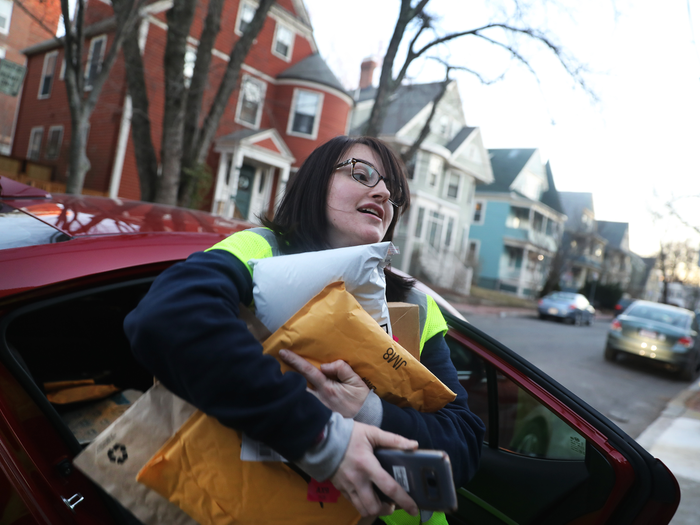In the last post, we've taken a look at Amazon driver experience. They are assigned by the block of neighbourhood. They are assigned by dots. Choosing the route of delivery is up to each driver and there're other variables like empty home you want to revisit at the end of the shift.
Now we know what they do, let's dive in if there's a room of optimization by the better traveler salesman.
Effort is set on Clustering Deliverables
I have to first give appreciation for their effort in keeping the deliverables in the same reasonable cluster every day for the drivers. There must be a lot of intelligence put into grouping the delivering goods together in one neighborhood so it's possible for drivers to deliver 100+ goods under 3 hours with minimum driving.
Traveler's salesman problem strictly focuses on the order of delivery. The shortest path possible. Amazon Flex reasonably works using Mapbox. But the grouping can be messed up by that block.
Traveler Salesman in Amazon Delivery
The main navigation for drivers it a point to point direction like a normal Google Map. The general sorting isn't perfect and there're certainly some complaints from the drivers on YouTube. But overall, it captures the general trends in the neighbourhood where you have to deliver goods.
One assumption I got wrong is unlike traveler's salesman hypothetical problem like traveling across United States city, the delivery is highly concentrated by the neighbourhood. So the cost of making a wrong turn is not high.
It will not be as impactful as random numbers slotted.
One area that can improve may be the dynamic routing. So it computes the best route alternative every time you deliver a good to one place. That will make it easy to change the routing order as an expected event comes (a place nonparkable, or one way street). The only obstacle in that is package that is difficult to be taken out from the truck once loaded.
I can only imagine the amount of computation that goes into Amazon every morning to decide and pick the best route possible for them.
Future of Delivery
The right solution may not be in applying the salesman as the routing works reasonably well. But in achieving the speed to respond to the dynamic routing. Dispatching is handled at 3 hour interval for Amazon Flex driver. I can only imagine that will get shorter and shorter to the point of Uber like driving delivery of 1 hour slot. That's necessary because of the growing demand of online goods and our shortened expected delivery time.
The future holds in instant recalculation of the best route possible.

